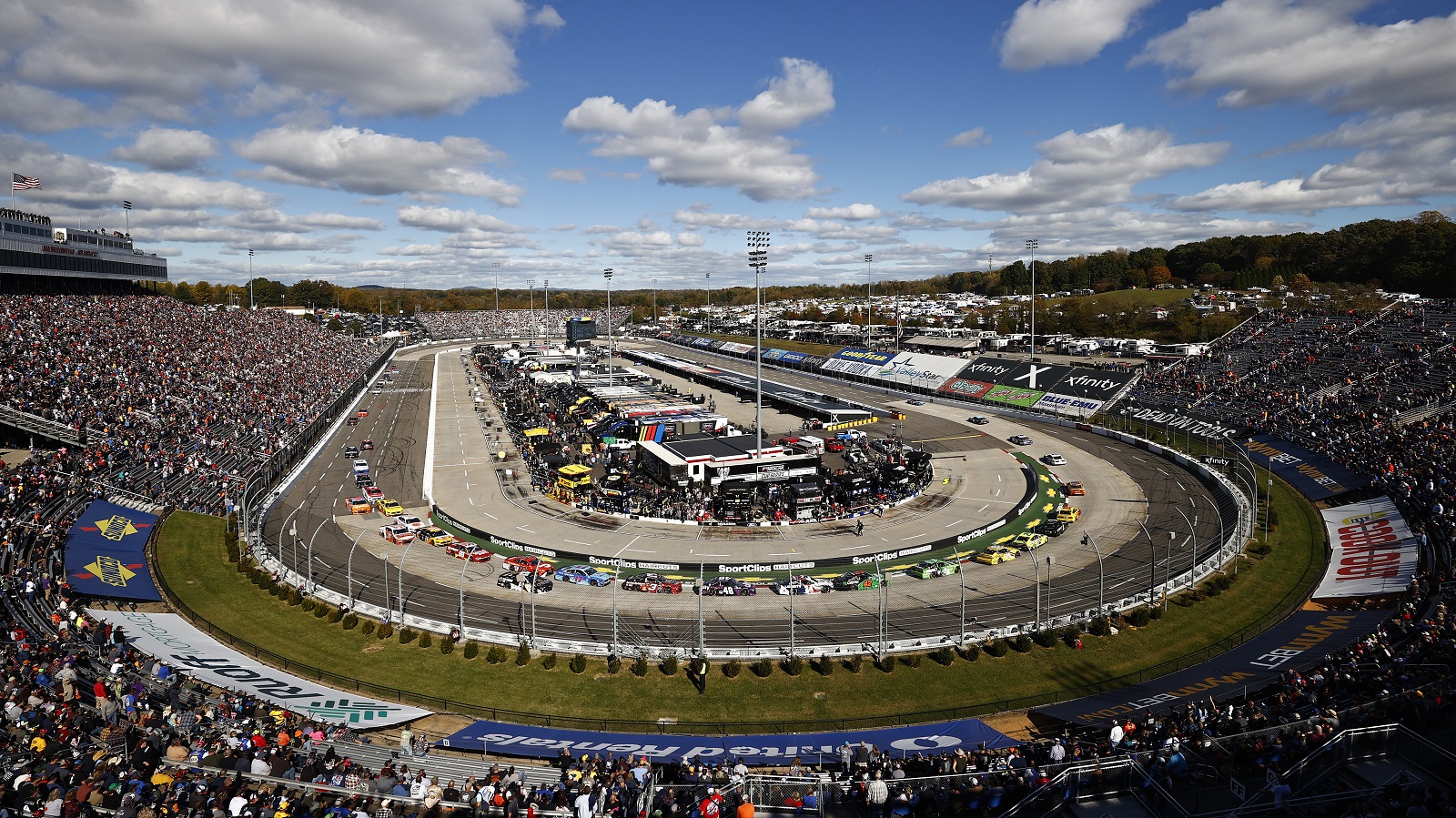NASCAR
Why Is the Martinsville Cup Series Night Race Shortened to 400 Laps in 2022?

Whether it’s William Byron, Kyle Busch, or anyone else, Saturday night’s NASCAR Cup Series winner will accomplish something not done at Martinsville Speedway since Rusty Wallace in 1995: He will win a race there in fewer than 500 laps.
The running of the Blue-Emu Maximum Pain Relief 400 ends a streak of 131 Cup Series races, beginning in 1957, scheduled for 500 laps.
Your mileage may vary when it comes to naming NASCAR Cup Series races

The majority of races on the annual NASCAR Cup Series schedule incorporate both a presenting sponsor’s name and a number indicating the length of the race. The sponsors’ line of business can vary widely, from the “Go Bowling at the Glen” at Watkins Glen to the “Food City Dirt Race” at Bristol.
There is also a wide variety of numbers, as well as differences in what they mean. They reflect durations measured by:
- Miles: The Daytona 500 is the best-known race in the category. It’s the signature race of the entire Cup Series.
- Kilometers: The Ruoff Mortgage 500 three weeks ago, won by Chase Briscoe, consisted of 312 laps on a mile track, working out to 500 kilometers.
- Laps: Richmond’s two races, the Toyota Owners 400 and the Federated Auto Parts 400, are 300 miles of driving on the three-quarters-mile track.
The Blue-Emu Maximum Pain Relief 400 also falls under the latter. At 400 laps on Martinsville Speedway’s .536-mile track, the race checks in at 210 miles. That’s 20 percent shorter than the distance NASCAR fans have become accustomed to seeing at the Virginia venue.
Why is the Martinsville Cup Series night race shortened to 400 laps?
After scheduling 131 straight NASCAR Cup Series races for 500 laps, Martinsville executives decided early this year to trim the spring race to 400 laps. Given that the track is the oldest facility from NASCAR’s original schedule in 1949, according to CBS Sports, it was not a move made without considerable thought.
With the race scheduled to start shortly after the 7:30 p.m. air time for FS1 television coverage, the concern was that a 500-lap race could run deep into the night. With many fans traveling a great distance to a track that isn’t the most easily accessible facility on the schedule, that would put spectators on the road and headed for home at a late hour.
The past five Martinsville 500-lappers ranged in length from 3 hours, 29 minutes to 3 hours, 54 minutes, according to Fox Sports’ Bob Pockrass. With 16 cautions and weather a concern, Friday’s much shorter Xfinity Series race at Martinsville, the Call 811 Before You Dig 250, checked in at 2 hours, 27 minutes.
The Martinsville change was several years in the making
The last time a Martinsville Cup Series race came in at under 500 laps was in 1995, when Rusty Wallace, who excelled at the track, held off Ted Musgrave, Jeff Gordon, and Darrell Waltrip over 356 laps due to rain.
Track officials intended to push back the start of the Blue-Emu Maximum Pain Relief 500 in 2020. However, that race got caught in the shuffle as NASCAR revised its schedule during the early days of the pandemic. It became an afternoon event in June won by Martin Truex Jr.
Last season, rain interrupted the race, forcing a Sunday conclusion featuring another Truex triumph.
This year’s fall race at Martinsville, the Xfinity 500, is a 2 p.m. start on Oct. 30 and serves as the transfer event before the Championship 4 at Phoenix.
Like Sportscasting on Facebook. Follow us on Twitter @sportscasting19.
RELATED: Who Has the Most NASCAR Cup Series Wins at Martinsville Speedway?











